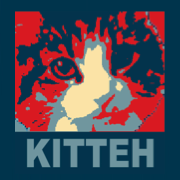Games and word activities give children another way to integrate their learning and reinforce their literacy skills. They provide different and enjoyable contexts in which children can apply what they are learning. This booklet offers activities which provide a sampling of "fun" ways for tutors to support and supplement their tutees' classroom experiences. The booklet first gives a list of technical terms and then presents step-by-step instructions for playing the following games:...
Topics: ERIC Archive, Educational Games, Elementary Education, Learning Activities, Literacy, Tutoring
This workbook contains exercises for use with college students to teach them about the use of census data and to help them acquire census related skills. The workbook supplements "Census '80: Continuing the Factfinder Tradition," an undergraduate textbook published in early 1980. The volume is divided into two parts. The first provides an overview for instruction. Each exercise is described briefly with notations on the skills that the activity develops. Italicized notes draw the...
Topics: ERIC Archive, Census Figures, Higher Education, Learning Activities, Skill Development
This booklet presents a step-wise sequence for incorporating environmental objectives into any instructional program. The process involves determination of awareness, selection of the environmental problem, identifying subject area units, writing environmental objectives, specifying skills, naming concepts and content, developing unit instructional procedures, and developing questions and activities. The roles of others outside the classroom in managing and initiating environmental instruction...
Topics: ERIC Archive, Curriculum Guides, Environmental Education, Instructional Design, Instructional...
This document represents collaborative efforts to define what is valued and necessary in mathematics education for Pacific region children. Underlying assumptions to these standards include constructivism, communication, problem solving, connections, time for learning, and challenge for all students. The majority of the document contains the standards which are grouped into three grade-level sections, K-4, 5-8, and 9-12, and are based largely on the National Council of Teachers of Mathematics'...
Topics: ERIC Archive, Elementary Secondary Education, Learning Activities, Mathematics Curriculum,...
This curriculum for Head Start programs provides preschool learning experiences that teach about dental health. The majority of the curriculum guide is devoted to the following lesson plans: (1) "Introduction of 'Smiley the Super Pup'," an optional puppet character which may be used to review the concepts covered in each lesson; (2) "Visiting the Dentist"; (3) "Awareness of the Mouth"; (4) "The Important Functions of the Mouth"; (5) "The Importance...
Topics: ERIC Archive, Curriculum Guides, Dental Health, Disabilities, Learning Activities, Preschool...
Experiential activities provide each participant with the ability to see, feel, and experience whatever therapeutic issue the facilitator is addressing, and usually much more. This paper presents experiential activities to address the 12 steps of recovery adopted from Alcoholics Anonymous. These 12 steps are used worldwide for many other recovery programs and substitutions are made, replacing the word alcoholism or alcoholic with addiction or addict. The 12 steps are presented, along with the...
Topics: ERIC Archive, Alcoholism, Counseling, Drug Addiction, Drug Rehabilitation, Experiential Learning,...
This study surveys the audio-tutorial practices and evaluations at 91 California and 25 other junior colleges in the United States. Seventy of the California colleges indicate they are now or will be using the audio-tutorial method in the near future. A large majority of them indicate that they prepare their materials locally. Many of the colleges use performance objectives in their programs, and emphasize constant student feedback and revision of instructional materials. Most also noted that,...
Topics: ERIC Archive, Audiovisual Instruction, Instruction, Learning Activities, Teaching Methods, Two Year...
A small-group teaching method for physical education which uses grids comprising 10-yard squares is outlined. It is stated that grids can be used for both indoor and outdoor activities. The advantages of using grids and specific physical objectives which can be met are listed. A detailed example of an activity in which students use a variety of techniques to move a ball through the grid is offered. (DC)
Topics: ERIC Archive, Athletics, Elementary Secondary Education, Learning Activities, Objectives, Physical...
This document presents ideas and activities for teaching algebra. The section on "Week by Week Essentials" provides seven resources in a weekly format. It includes writing ideas that provide an algebra prompt and requires students to organize their thoughts and present them in a coherent fashion, and connections to the real world that identify situations or problems where algebra is an important tool in their investigations and explanations. Also included are specific mathematics...
Topics: ERIC Archive, Algebra, Elementary Secondary Education, Learning Activities, Mathematics, Problem...
The process of identifying techniques for fostering creativity, and applying these theoretical constructs in real-world educational activities, is, by nature, multifaceted and not straightforward, pertaining to several fields such as cognitive theory and psychology. Furthermore, the quantification of the impact of different activities on creativity is a challenging and not yet thoroughly investigated task. In this paper, we present Semantic Lateral Thinking as a candidate for fostering creative...
Topics: ERIC Archive, Story Telling, Games, Creativity, Creative Thinking, Learning Activities,...
In previous articles, the author has discussed dominoes, the real game with scoring, and other good games and activities using dominoes. But dominoes, as materials for game-playing, and as a topic for mathematics learning experiences, as suggested by Swan (2001) and Brandreth (1975), have many other possibilities. In this article, the author explains how to turn an ordinary set of dominoes into games of mystery, movement and strategy.
Topics: ERIC Archive, Mathematics Education, Teaching Methods, Elementary School Mathematics, Games,...
For 8 weeks during 1991, a project was conducted in which literacy was emphasized within the context of one fourth-grade social studies classroom. The overall goal for this unit of instruction was to create language-rich experiences that would stimulate higher order thinking about the concept of Liberty. Additionally, students were to become more aware of the cognitive aspects of learning through class activities involving reading, writing, speaking, and listening. The activities were meant to...
Topics: ERIC Archive, Class Activities, Grade 4, Intermediate Grades, Learning Activities, Literacy, Social...
Five group building and cooperative learning activities for the early childhood classroom are provided. The activities are designed to help create a positive, interactive classroom environment. Introductory comments provide a rationale for using cooperative activities with children. Lesson plans list objectives and materials needed, describe procedures, and offer guidelines for student practice, closure, and lesson evaluation. (RH)
Topics: ERIC Archive, Cooperative Learning, Early Childhood Education, Learning Activities, Lesson Plans
Of the multitude of dialects which exemplify the Spanish language, Puerto Rican Spanish has suffered the most severe rejection by language purists and pseudolinguists. The need to take a clear and open look at Spanish spoken in Puerto Rico is preeminent. It is the purpose of this module to clarify some major points of controversy regarding Puerto Rican Spanish by presenting an extensive discussion concerning the background and intent of the language. A preassessment and a postassessment test...
Topics: ERIC Archive, Bilingualism, Language Patterns, Language Usage, Learning Activities, Learning...
This position paper focuses on noise pollution and the problems and solutions associated with this form of pollution. The paper is divided into the following five sections: Noise and the Ear, Noise Measurement, III Effects of Noise, Acoustics and Action, and Programs and Activities. The first section identifies noise and sound, the beginnings of noise pollution, and describes the progress of hearing. A diagram of the ear is included. Noise Measurement, the second section, considers the hearing...
Topics: ERIC Archive, Acoustics, Elementary Secondary Education, Environment, Environmental Education,...
A professional learning network (PLN) is a community of individuals around the world who are learning together. They can start out as strangers, people one couldn't pick out in a crowded room. But Twitter, the virtual meeting place where one's PLN comes together, helps these strangers come together to create a community built on communication and collaboration dedicated to making learning and education the best it can be. The first thing to know is that developing a PLN on Twitter takes a...
Topics: ERIC Archive, Professional Development, Learning Activities, Interprofessional Relationship,...
This booklet is one of a series developed by the Northern Colorado Educational Board of Cooperative Services to make available to teachers ideas designed and tested by other teachers. Many of the ideas are from educational journals as well as from the Educational Resources Information Center (ERIC). The booklet is divided into two sections, one dealing with character and one with plot. Each section contains suggestions for approximately ten activities, with the materials needed and the purpose...
Topics: ERIC Archive, Characterization, Class Activities, Creative Writing, Elementary Education, Learning...
Prepared as an aid to teachers, the document provides four outlined examples showing how to establish appropriate subobjectives and learning tasks when teaching Field Objectives from the Wisconsin Guide to Local Curriculum Improvement in Industrial Education, K-12. Examples seek to implement student understanding of the guide objectives and are geared to elementary, middle-junior high, junior high, and senior high school levels. (LH)
Topics: ERIC Archive, Educational Objectives, Elementary Secondary Education, Industrial Education,...
Three skills of written expression--composition, mechanics, and grammar--are the focus of this guide for elementary grades. The goal for these areas is for all students to learn how to use the skills of composing and editing appropriate to their age and level of individual development. Within the categories of composition, mechanics, and grammar, each grade, kindergarten through eighth, is assigned specific goals and activities. (TS)
Topics: ERIC Archive, Curriculum Guides, Elementary Education, Grammar, Language Arts, Learning Activities,...
This is one of a series which focuses on innovations in the training and supervision of counselors. It discusses co-counseling by providing: (1) a definition of the procedure; (2) a description of models of practice; (3) a discussion of the effects of using co-counseling; (4) suggestions for possible applications of the procedure; and (5) steps to follow when designing co-counseling experiences. A bibliography is included. (Author)
Topics: ERIC Archive, Cocounseling, Counseling Effectiveness, Counselor Performance, Counselor Training,...
Instructional materials for use during Black History Month in elementary and secondary schools are compiled in this booklet. Background information, instructional activities, and resources for classroom use are included for all disciplines. The materials are designed to reflect the relationship between past and present events in African and African American history. Following a foreword, instructor's guide, and chronology of notable African Americans, the booklet is divided into seven sections...
Topics: ERIC Archive, Black Achievement, Black History, Black Influences, Elementary Secondary Education,...
A course designed to groom editors for the newspaper is presented. Editing copy, copyreading and proofreading, principles of headlining, responsibility of the press, libel and slander laws, and problems of censorship are covered. Course objectives include the following: (1) The student will recognize and correct all newspaper items that do not conform to the style of the school's newspaper; (2) The student will copyread a newspaper story eliminating all errors in mechanics, evidence of...
Topics: ERIC Archive, Behavioral Objectives, Course Content, Course Objectives, Journalism, Learning...
This is a compilation of instructional materials to assist teachers and students in learning about the metric system. Contents are organized into four color-coded sections containing the following: (1) background and reference materials for the teacher, including a list of available media and a conversion chart; (2) metric activities for primary grades; (3) metric activities for the middle school; and (4) metric activities for high schools. Over 12 activities are included in each of the...
Topics: ERIC Archive, Elementary Secondary Education, Instructional Materials, Learning Activities,...
The manual describes activities designed to teach dance to adolescents with mild mental retardation. It is explained that the manual can be used in a sequential 25-week course in a mini-approach, or as a special event or performance guide. Expected outcomes are considered, including increased self-confidence, improved peer cooperation, and increased independence. The bulk of the manual is composed of 30 activity lessons which include information on goals and objectives, tasks, organization, and...
Topics: ERIC Archive, Adolescents, Dance, Evaluation Methods, Learning Activities, Mild Mental Retardation,...
Two lesson plans designed to teach the geographic theme of movement to third grade students are presented in this document. The first lesson involves the study of a can of fruit cocktail, and explores the ways in which the production of the fruit cocktail and its transportation connects the students' town to other towns. The second lesson involves the study of a candy bar, and asks students to address the question: "How did that candy bar come to be right there in front of you?" Each...
Topics: ERIC Archive, Geographic Concepts, Geography Instruction, Grade 3, Learning Activities, Primary...
Outdoor recreation programs are valuable because they always permit, and always can promote interactions between participants and natural elements of the environment. Because such programs provide direct, personal experience in the outdoors, they should also seek to provide participants with a basic understanding of, and an appreciation for the interrelationships that exist in the environment and between humans and the environment. All outdoor programs, including recreational ones, should...
Topics: ERIC Archive, Elementary Secondary Education, Environmental Education, Learning Activities, Outdoor...
The author describes a method by which parents can help their children learn basic addition facts by playing dominos. (SD)
Topics: ERIC Archive, Addition, Games, Instructional Materials, Learning Activities, Mathematics Education,...
The field tested sixth grade instructional unit is designed to acquaint the student with a variety of occupations found in the area of ranching, using activities and concepts from several academic areas. The unit takes approximately 28 and one-half hours of teaching time and involves large and small group and individual work. A list of required materials is included. The teacher is presented with suggested performance objectives, recommended and alternate learning activities, student evaluation...
Topics: ERIC Archive, Agricultural Education, Career Education, Elementary Education, Grade 6, Integrated...
Guidelines for teaching consumer and homemaking education which emphasize actual experiences by the learner are presented. The contents of the document were chosen from learning activities and experiences which were proven successful in the classroom. The guide consists of seven sections: (1) community involvement; (2) consumer decision making--values and goals; (3) rights, responsibilities, and protective actions; (4) advertising and its implications; (5) managing of basic necessities; (6)...
Topics: ERIC Archive, Competency Based Education, Consumer Education, Home Economics, Learning Activities,...
This manual contains learning activities to aid secondary teachers in clarifying and enriching the Scholastic materials "Living Law." The format of the manual includes a brief overview, background information, teacher instructions, and a description of each activity. Case studies, simulations, and role-playing activities are provided. Topics treated include helping the victims of crime, the police board, pre-trial release, plea bargaining, the treatment of witnesses, appelate court,...
Topics: ERIC Archive, Case Studies, Crime, Justice, Learning Activities, Legal Education, Role Playing,...
This booklet is one of a series developed by the Northern Colorado Educational Board of Cooperative Services to make available to teachers ideas designed and tested by other teachers. The activities are gathered from educational journals as well as from the Educational Resources Information Center (ERIC). The first section of the booklet contains activities for making four basic types of puppets. Since puppets can be fairly difficult to make, it is suggested that the art teacher assist in these...
Topics: ERIC Archive, Class Activities, Communication (Thought Transfer), Elementary Education, Language...
This model is designed to serve as a conceptual framework for alternative programs with primary emphasis on provisioning (the way in which time, space, material, equipment, and activities are used in the learning environment). The model's concern is to assess concrete examples or tendencies of teachers, students, and the education program. The following two instruments were developed to achieve this objective: (a) the teacher questionnaire, and (b) the observation rating scale. These...
Topics: ERIC Archive, Inservice Education, Learning Activities, Models, Nontraditional Education, Student...
Energy and its relationship to the environment is the topic of this activity guide. The student activities vary in sophistication and can be used at the different grade levels, K-12. These activities are designed for correlation in the existing school curriculum and have as their objectives the teaching of skills through manipulation of materials and independent study, the shaping of positive environmental attitudes, and the developing of an environmental awareness. Each chapter in the guide...
Topics: ERIC Archive, Elementary Secondary Education, Energy, Environmental Education, Interdisciplinary...
The teaching unit focuses on a month (December) of primary grade activities designed around the themes of: (1) festivals of merriment and light, (2) Christmas around the world, (3) Christmas at home, and (4) Kwanza. Concepts such as special family rituals, special foods, and giving of gifts are stressed. Suggested books, movies, and a calendar of activities are provided. Included for each activity is information on the content area, the age group, and the activity (includes materials, special...
Topics: ERIC Archive, Holidays, Learning Activities, Lesson Plans, Multicultural Education, Primary...
Developed primarily as a source of information for teachers planning outdoor education experiences, the material in this resource book can be used by any teacher in environmental studies. Subjects and activities most often taught as part of the outdoor education program are outlined both as resource (basic information) and teaching units. The teaching units suggest pre-camp, camp, and post-camp activities, indicating materials required and procedures to follow for the activities. Topics...
Topics: ERIC Archive, Elementary Education, Environmental Education, Instructional Materials, Learning...
This guide is activity oriented and designed to provide environmental experiences for children in grades four through six which will involve them in making value judgments relative to their own community. Content covers problems dealing with air pollution, water pollution, solid wastes, and the aesthetics of visual pollution. Five to fourteen lessons are suggested for each major area indicating the individual topic to be studied, aim of the lesson, approach or key questions, outline (of...
Topics: ERIC Archive, Elementary Education, Environmental Education, Learning Activities, Lesson Plans,...
The learning package is designed to provide the marketing educator with a culminating activity for an instructional unit focusing on advertising layout principles and procedures. It is to be used in conjunction with 35mm slides of newspaper advertisements, which the student views and rates in comparison with the ratings of a panel of experts. A motivational device is employed in awarding the students "profile points" based upon their ratings. Each of the 10 case studies includes...
Topics: ERIC Archive, Case Studies, Instructional Materials, Journalism, Layout (Publications), Learning...
This document contains a U.S. Navy Rate Training Manual and Nonresident Career Course which form a self-study package to teach the theoretical knowledge and mental skills needed by the Opticalman Third Class and Opticalman Second Class. (Opticalmen maintain, repair, and overhaul telescopic alidades, azimuth and bearing circles, binoculars, compasses, gunsights, sextants, hand-held rangefinders, night vision equipment, submarine periscopes and other precision instruments.) Information in the...
Topics: ERIC Archive, Curriculum, Equipment Maintenance, Independent Study, Learning Activities, Light,...
The manual provides information about using learning centers in mainstreamed home economics classrooms. The initial chapter introduces the rationale for the approach and presents a three-stage model depicting an integrational approach to mainstreaming. Chapter 2 outlines typical characteristics and recommendations for accommodating students with physical disabilities (hearing, visual, speech, and motor impairments); cognitive disabilities (learning disabilities, mild mental retardation); and...
Topics: ERIC Archive, Disabilities, Elementary Secondary Education, Home Economics, Learning Activities,...
The paper provides a simplified introduction to conflict theory through a series of in-class exercises. Conflict resolution, defined as negotiated settlement, can occur through three forms of communication: tacit, implicit, and explicit. Tacit communication, taking place without face-to-face or written interaction, refers to inferences made and action taken on the basis of mutual knowledge or assumptions about the other's probable responses. Implicit communication is the expression of intent to...
Topics: ERIC Archive, Communication Skills, Conflict Resolution, Higher Education, Learning Activities,...
Two fire education programs for young children are described. The basic principles of both programs are the same: keep it short, make it fun, and get the children involved. The first program addresses what to do if clothes catch fire, teaching about matches, and exiting during a fire (crawling under smoke, raising windows, and unlocking doors). Instructional strategies and activities are outlined for three age groups in the second program: infants/toddlers, children 3-5 years old, and children...
Topics: ERIC Archive, Early Childhood Education, Fire Protection, Learning Activities, Program...
The guide to planning a consumer education program for K-12 was developed by teachers in a Massachusetts school district during a series of workshops; direction was provided by the results of a parent questionnaire. The document is comprised of a resource guide and three outlines of concepts and generalizations to be developed in consumer education, with corresponding learning experiences suggested. There is an outline for each of three grade levels: K-4, 5-8, and 9-12. The resource guide,...
Topics: ERIC Archive, Consumer Education, Curriculum Guides, Elementary Secondary Education, Learning...
The teaching guide outlines developmentally sequenced activities for learning the basic computational skills. Sections cover sequential steps for the addition, subtraction, multiplication, and division of whole numbers; information on developing building kits and sample worksheets; the use of number sheets (sample sheets are provided); and the use of teaching machines for math. The bulk of the document focuses on individual and group activities for learning number facts. Each activity or game...
Topics: ERIC Archive, Arithmetic, Elementary Education, General Education, Instructional Materials,...
After a brief discussion of group games as resources for international understanding, this paper provides guidelines for discussing cultural games with children. Twelve games for students between 7 and 12 years of age are described. Games were selected for inclusion because they were: (1) generally cooperative in nature; (2) authentic and representative of a variety of cultures; (3) developmentally appropriate; (4) minimal in requirements for equipment and preparation; (5) rich in opportunities...
Topics: ERIC Archive, Childrens Games, Cultural Awareness, Educational Games, Guidelines, Learning...
Designed for individualized instruction, this unit contains objectives, materials needed, and assignments for teaching about the future on the secondary level. The unit is designed to take different formats and directions and is applicable to any subject area. Objectives and assignments are both listed in brief numerical order. Some of the 17 objectives are that students will discuss techniques for forecasting the future, generate a scenario for the future, discuss diversified types of...
Topics: ERIC Archive, Futures (of Society), Individualized Instruction, Learning Activities, Secondary...
Written by teachers for teachers of English and the language arts in kindergarten through grade 12, this book presents 50 projects and activities that involve students actively in the processes of their learning experiences. Each project includes a statement of objectives, a brief description of the project, lists of suggested procedures for the teachers and the students, and recommendations for evalutation. The 50 projects are grouped into four sections: producing books, magazines, and...
Topics: ERIC Archive, Elementary Secondary Education, English Instruction, Experiential Learning, Language...
Storytelling, a creative art form with a long history and considerable instructional potential, is increasingly regarded in schools and communities as literature. Recent papers and articles in the ERIC database discuss the use of storytelling in the classroom to develop language abilities, literature appreciation, critical thinking and comprehension, and understanding of community and self. Storytelling is effective in fostering a relaxed and intimate atmosphere in the classroom. Numerous...
Topics: ERIC Archive, Class Activities, Elementary Secondary Education, Expressive Language, Learning...
Because humans and nature are inextricable entities sharing a common global lifespace, natural and social environments are interactive and interdependent. There is a need to (1) understand the origins and characteristics of lifespace phenomena; (2) perceive man and Nature relationships; (3) respect Nature; (4) appreciate the beauty of one's surroundings; (5) commit one's self to preserving a quality lifespace; and (6) prevent rift between natural and social (human-made) environments. Thus it is...
Topics: ERIC Archive, Environment, Environmental Education, Learning Activities, Secondary Education,...
This paper describes an English literature survey course in which journal keeping and abstracts are used as learning tools. Journals are useful because of the high degree of freedom and subjectivity which they allow students in writing: no assignments are given and there are no length requirements. Abstracts of articles and books that students encounter are used to encourage research and reinforce classroom discussions. An appendix includes a course syllabus and sample excerpts from the...
Topics: ERIC Archive, Abstracts, Curriculum Guides, Diaries, English Literature, Higher Education, Learning...
This solid waste resource was designed as a flexible tool for teachers of kindergarten through sixth grade. The multidisciplinary focus includes math, science, art, social studies, language arts, and health. Lessons encourage students to utilize skills ranging from reading and writing to problem-solving and analytical thinking. This document provides hands-on lessons and activities, enrichment ideas, journal writing assignments, and other educational tools related to preventing and reducing...
Topics: ERIC Archive, Elementary Education, Environmental Education, Hazardous Materials, Interdisciplinary...
Ways in which a playground may be used an an area for young children's education are described. Techniques for encouraging children to observe, explore, and investigate are pointed out, and the implications for future learning implicit in these skills are noted. (JD)
Topics: ERIC Archive, Discovery Learning, Early Childhood Education, Learning Activities, Observation,...
Intended for trainers or workshop planners, the guide provides information and suggestions for planning and conducting an effective workshop. Although an awareness workshop on serving disabled campers is used to illustrate the material, the procedures apply to all types of workshops, ranging from awareness workshops to managerials. The guide will help trainers or workshop planners to: choose a title for the workshop that will encourage attendance; provide information on the types of content,...
Topics: ERIC Archive, Administrator Education, Audience Participation, Camping, Disabilities, Learning...
In 1993, Bolivia was selected as a site to pilot an interactive radio instruction (IRI) project that would provide practical support to adult caregivers and children around early childhood development. Through linkages with health and education networks, PIDI (Programa Integral de Desarrollo Infantil) provided young children under the age of six food with health care and the attention of two community caregivers. The audio series, "Jugando en el Pidi," was created to reach a rapidly...
Topics: ERIC Archive, Audiotape Recordings, Caregivers, Child Development, Educational Radio, Foreign...
Created to support aesthetic education for grades K-6, this document provides a scope and sequence for instruction which art teachers can use. Areas covered include: drawing, painting, collage, printmaking, textile arts, puppetry, architecture, environmental design, film-making, and commercial art. Detailed outlines of concepts, performance objectives, materials, vocabulary lists, procedures, assessment measures, resources, and related instruction are provided for each lesson. A table showing...
Topics: ERIC Archive, Aesthetic Education, Art Education, Behavioral Objectives, Elementary Education,...
StarServe is a national, non-profit organization that provides materials, resources, and ongoing assistance free to teachers and administrators to make community service part of a class or school-wide activity. StarServe utilizes celebrities to bring the message to students: "You can be a star through service to others." This StarServe kit includes the teacher's guide, activity masters (in English and Spanish), information for students interested in becoming StarServe reporters, a...
Topics: ERIC Archive, Citizen Participation, Community Programs, Community Services, Educational Resources,...
This paper presents arguments for using creative dramatic activities with adolescents and senior citizens. In the case of teenagers, problems caused by rapid transition into adult life can be confronted through dramatic material which explores these issues. Exercises need not moralize, but they can subtly present new means of dealing with conflict. With older adults, similar activities can improve self-image and can foster creative growth. Examples of dramatic experiences with these two groups,...
Topics: ERIC Archive, Adolescents, Dramatics, Learning Activities, Older Adults, Postsecondary Education,...
It is no exaggeration to say that how well students develop the ability to comprehend what they read has a profound effect on their entire lives. A major goal of reading comprehension instruction, therefore, is to help students develop the knowledge, skills, and experiences they must have if they are to become competent and enthusiastic readers. Over the past few decades research has revealed much about how readers get meaning from what they read and about the kinds of instructional activities...
Topics: ERIC Archive, Classroom Techniques, Elementary Secondary Education, Instructional Effectiveness,...
This publication is a guide for the design of student projects in environmental education. A few advantages of problem-focused projects are: easy incorporation into the ongoing curriculum; opportunity for joint student/teacher use of knowledge, information, and skills in action-oriented activities related to local environmental concerns; identifying, weighing, and clarifying values; research and technical reporting skills; and development of divergent and convergent thinking skills. The student...
Topics: ERIC Archive, Environmental Education, Instructional Materials, Learning Activities, Problem...
This guide is designed for the second part of a two-part bookkeeping course for adults who are either keeping a set of records for a small business, or who wish to prepare to do so. The following seven lessons are included and are based on a business making retail sales of goods: (1) Introduction; (2) Data Sources and Recording for a Trading Business; (3) Journalizing, Posting, and Trial Balance; (4) Journalizing, Posting, and Trial Balance (continued); (5) Eight-Column Worksheet, and Preparing...
Topics: ERIC Archive, Adult Education, Bookkeeping, Business Education, Curriculum Guides, Learning...
Intended for teachers, this booklet shows how spoken language can affect student thinking and presents strategies for teaching critical thinking skills. The first section discusses the theoretical and research bases for promoting critical thinking through speech, defines critical thinking, explores critical thinking as abstract thinking, and tells how speech activities such as drama and discussion promote abstract thinking. The second section explains the structure and dynamics of small-group...
Topics: ERIC Archive, Abstract Reasoning, Critical Thinking, Learning Activities, Logical Thinking,...
Intended to help students develop into discerning and perceptive theater audience members, this curriculum guide seeks to promote a course of study in which each and every student becomes aware of the world around them and how the arts, and specifically theater, are a reflection of and a comment on the world. It includes goals, objectives, activities, and evaluation techniques that may be used in developing both junior high and high school courses that will foster an appreciation and...
Topics: ERIC Archive, Class Activities, Learning Activities, Secondary Education, State Curriculum Guides,...
This booklet contains a representative sample of the efforts of colleagues at 11 institutions to use graphing calculators to enhance the teaching of calculus and precalculus. The first section contains examples of graphs for teachers to choose from for presentations, including: simple examples to illustrate some standard ideas in precalculus, examples of graphs for which the window choice is critical and a knowledge of mathematics is essential for predicting hidden behavior, and examples that...
Topics: ERIC Archive, Calculus, Graphing Calculators, Graphs, Higher Education, Learning Activities,...
This booklet contains instructions for 10 activities that can be used during a designated NEED (National Energy Education Development) Week. The activities are designed to educate students about energy and to involve students in educating the community about energy. The activities include: (1) establishing an energy information resource center; (2) prompting all teachers to teach at least one energy-enriched lesson; (3) creating energy education placemats for area restaurants; (4) publishing an...
Topics: ERIC Archive, Community Education, Elementary Secondary Education, Energy Education,...
The executive director of a day care center designed a project to introduce multicultural materials into the center's early childhood curriculum. The primary goal of the project was to improve the quality of the curriculum of the nationally accredited preschool by making it more culturally sensitive. Activities conducted to attain this objective included the design of age-appropriate lesson plans for teachers to use in their classrooms, distribution of letters to parents requesting their...
Topics: ERIC Archive, Curriculum Development, Day Care Centers, Early Childhood Education, Learning...
The National Governors Association (NGA) selected the Independence (Missouri) Public School District as one of 16 districts to implement recommendations in the NGA's "Time for Results" report. The district was chosen because of its strong leadership, evidence of community support, and ability to implement innovating programs. The Independence elementary program goes beyond the basics; the district was one of the first nationwide to pilot the Parents as Teachers Program, an exemplary...
Topics: ERIC Archive, Community Involvement, Curriculum Enrichment, Educational Improvement, Elementary...
The purpose of this unit of study is to familiarize kindergarten children with the use of symbols to represent actual places or objects. The unit is primarily intended for kindergarten children, but can be modified for use with first grade students. Implementation of the unit should require between 10 and 12 class days. Provided are an outline of unit content; a list of objectives, including knowledge, skill, and attitude objectives; a list of learning activities; a list of materials and...
Topics: ERIC Archive, Educational Objectives, Instructional Materials, Kindergarten Children, Learning...
This article presents several tips that teachers can use to teach children about time. One activity, investigating 24-hour time, aims to familiarise upper primary students with converting a.m. and p.m. notations to 24-hour time. Another activity requires students to construct a calendar month in order to familiarize themselves with the components of a calendar month, to learn how one is typically constructed, and to practice finding particular dates. (Contains 3 footnotes.)
Topics: ERIC Archive, Learning Activities, Mathematics Instruction, Time, Teaching Methods, Elementary...
This report describes a classroom project that groups sophomore biology students into "companies" bidding for a "contract" to build a self-sufficient, enclosed city by producing a manual and model of their version of a biosphere. Students must develop technological support systems, social and economic parameters, and systems that meet physical and emotional needs for residents of the biosphere. The report provides a general description of the project and includes the...
Topics: ERIC Archive, Biology, Ecology, Environmental Education, High Schools, Interdisciplinary Approach,...
A communication instructor designed the "Organizational Feud" game to emphasize the variety and pervasive influence of organizations upon students' lives. In this game, students complete surveys indicating the organizations to which they belong and the values reflected in the organizations. The instructor codes the responses on the surveys and develops a profile of the organizations to which students belong and the organizations which are listed most frequently. The class is divided...
Topics: ERIC Archive, Class Activities, Educational Games, Higher Education, Learning Activities,...
Twenty-six activities related to forestry, conservation, and outdoor education comprise the content of this leader's guide. Designed for use with youth groups, ideas and techniques range from forest conservation mobiles, locating forest fires, and Christmas tree uses to litterbug campaigns, watershed experiments, and crossword puzzles. Activities are interdisciplinary in nature, dealing with language arts, science experiments, methematics, art, community service, social studies, economics, and...
Topics: ERIC Archive, Conservation Education, Environmental Education, Forestry, Leaders Guides, Learning...
Designed for use in a 1968 study of why adults learn, this interview schedule contains situation-description and question sheets for use by the interviewer and subject for examining thirteen reasons why adults begin and why they continue a learning project. (The study, "Why Adults Learn: A Study of the Major Reasons for Beginning and Continuing a Learning Project," is available as ED 025 688.) Introductory sheets instruct the subject (learner) to identify one thing he or she has spent...
Topics: ERIC Archive, Adult Learning, Adults, Goal Orientation, Interviews, Learning Activities, Learning...
Activities that employ the five themes of geography--location, place, relationships within places, movement, and regions--to teach about Venezuela and Mexico are described in this document. Each theme has objectives, a list of materials, and three types of activities--exploration, invention, and expansion. Background information on Venezuela and Mexico also is provided for teachers. (DB)
Topics: ERIC Archive, Elementary Secondary Education, Foreign Countries, Geographic Concepts, Geography...
A feedback technique for second-language compositions is that of "reformulation." This procedure consists of having a native writer of the target language rewrite the learner's essay, preserving all the learner's ideas. The learner then compares this version with the original version, complete with teacher corrections. To determine the benefits of this technique, 53 learners of Hebrew were divided into two groups, a reformulation group and a teacher-correction group. The students were...
Topics: ERIC Archive, Hebrew, Higher Education, Language Research, Learning Activities, Second Language...
The College of Education at the University of Wisconsin-Whitewater and the Milwaukee Public Schools collaborated on a series of 2 1/2-day resident camp outdoor education programs. Three to five university students were assigned to a camp period and received pre-camp orientation by the program directors. The students taught, counseled, and supervised as the program required. Post-camp activities included class discussion regarding the merit of teaching methods observed and utilized, the...
Topics: ERIC Archive, Educational Innovation, Environmental Education, Learning Activities, Learning...
The Michigan State University protocol materials on learning were field-tested at the University of South Florida (U.S.F.). The field-testing at U.S.F. did not occur under controlled, experimental conditions. The information needs of the protocol developers were balanced with the instructional obligations of the instructors and the educational needs of the students in the classes. Instructional management problems and error sources were highlighted. Error sources included operant learning,...
Topics: ERIC Archive, Audiovisual Instruction, Educational Research, Instructional Materials, Learning...

 The Internet Archive and Open Library offers over 10,000,000 fully accessible books and texts. There is also a collection of 300,000 modern eBooks that may be borrowed or downloaded by the print-disabled at OpenLibrary.org.
The Internet Archive and Open Library offers over 10,000,000 fully accessible books and texts. There is also a collection of 300,000 modern eBooks that may be borrowed or downloaded by the print-disabled at OpenLibrary.org.



 Open Library
Open Library
















